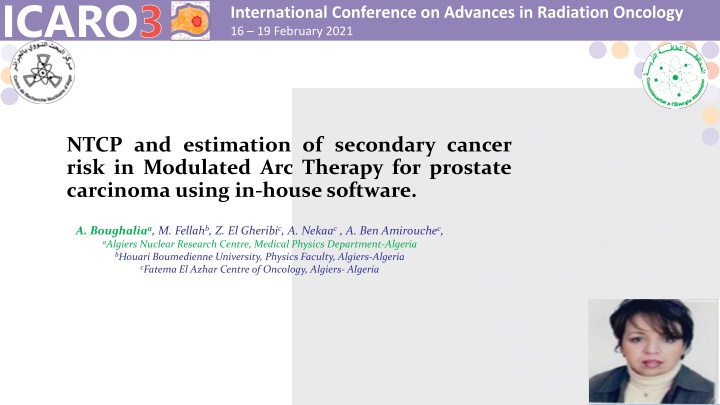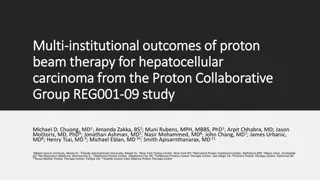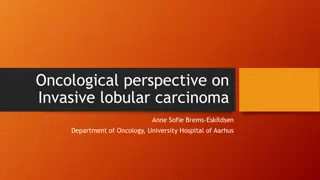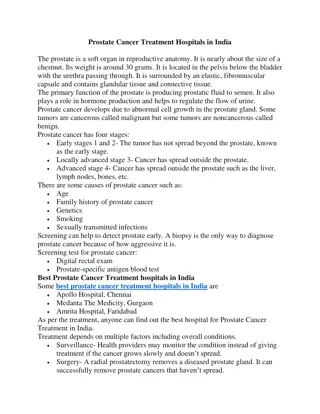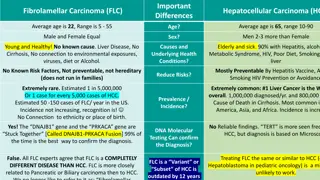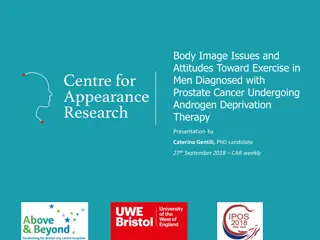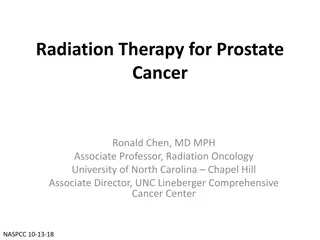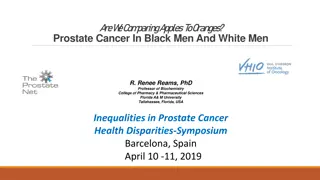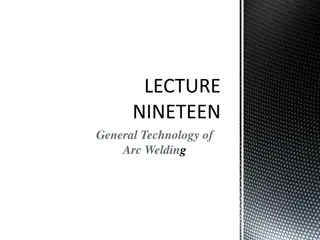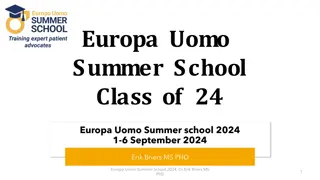NTCP and Secondary Cancer Risk in Modulated Arc Therapy for Prostate Carcinoma
Prostate cancer, a significant health concern worldwide, has seen advancements in treatment with the adoption of IMRT. However, the use of radiotherapy poses risks of inducing secondary cancers due to organ toxicity. A study presented at ICARO3 focused on evaluating the toxicity of organs at risk and estimating the likelihood of developing secondary cancers after radiotherapy. Using in-house software, NTCP metrics and risk assessment models were applied to analyze treatment outcomes for twelve prostate carcinoma patients. The results highlighted dose distributions, constraints, and planned treatment doses, shedding light on the potential impact on patient outcomes.
Download Presentation

Please find below an Image/Link to download the presentation.
The content on the website is provided AS IS for your information and personal use only. It may not be sold, licensed, or shared on other websites without obtaining consent from the author.If you encounter any issues during the download, it is possible that the publisher has removed the file from their server.
You are allowed to download the files provided on this website for personal or commercial use, subject to the condition that they are used lawfully. All files are the property of their respective owners.
The content on the website is provided AS IS for your information and personal use only. It may not be sold, licensed, or shared on other websites without obtaining consent from the author.
E N D
Presentation Transcript
ICARO3 ICARO3 International Conference on Advances in Radiation Oncology 16 19 February 2021 NTCP and estimation of secondary cancer risk in Modulated Arc Therapy for prostate carcinoma using in-housesoftware. A. Boughaliaa, M. Fellahb, Z. El Gheribic, A. Nekaac, A. Ben Amirouchec, aAlgiers Nuclear Research Centre, Medical Physics Department-Algeria bHouari Boumedienne University, Physics Faculty, Algiers-Algeria cFatema El Azhar Centre of Oncology, Algiers- Algeria Video / Profile Photo Area
ICARO3 INTRODUCTION Prostate cancer ranks third in men's cancers after colorectal and pulmonary cancer in the word. It reaches 10 million in 2020 with 7 million deaths particularly for the developing countries. In Algeria, it was classified at the 4th position after stomach cancer. During the last decade, IMRT is the most applied treatment modality for prostate cancer. It has been implemented for routine in 1995 till today; This evolution has of course improved clinical outcomes of cancer treatment but the toxicity of surrounding cells makes real/increases the probability to induce second cancers. The aim of this study was to evaluate the toxicity of organs at risk and to assess the induction of secondary cancers after radiotherapy. 1. New in-house software Coup le was developed using radiobiological metric such as Normal Tissue Complication Probabilities (NTCP); 2. Estimation the risk for developing secondary cancers after radiotherapy Video / Profile Photo Area
ICARO3 METHODS Twelve patients were treated for prostate Carcinoma with high risk; Medium Age 75 years old; T-Stage: T2aN0M0-T3bN0M0 All the PTVs were contoured by the radiation oncologist; Dose distribution was calculated with MONACO System taking into account dose constraints. The treatment was delivered by 18 MV VERSA HD Linear Accelerator, using VMAT modality with single arc in two directions (CW and CCW) Prostate carcinoma with high risk GTV + ganglions with margin of 5 mm CTV 1 + margin of 8 mm and 5 mm in posterior GTV CTV2 + margin of 8 mm and 5mm in posterior Prostate Organ s at risk Rectum Constraints V30 < 60% V60 <50% V70 < 25% V74 < 5% V60 <50 % V70 < 25% Maximum Dose Dmax < 76 Gy CTV1 PTV1 CTV2 PTV2 GTV Bladder Dmax < 82 Gy Constraints dose defined for Rectum and Bladder in case of Prostate cancer with high risk treated with VMAT. Definition of differents Targetsvolumes. I. Mathematical Model (Lyman-Kutcher-Burman): Toxicity after radiotherapy: II. Estimation of the induced second cancer: United Nations Scientific Committee on the effect of Atomic Radiation UNSCEAR Video / Profile Photo Area The values of 1 and 2 linear factors of DNA Mutation and cellular survival processes. D: is the total dose given to the patient in n fractions; 1 , 2: are linear factors of induction of DNA mutation and the cellular survival; 1, 2: are quadratic factors
ICARO3 RESULTS 1 Experience of 12 patients treated for Prostate CARCINOMA with high risk 76 Gy/38 fractions MONACO System Calculation and VERSA HD Linear Accelerator treatment Plans calculated with Monaco System Dmean(Gy) Dmax(Gy) Constraints on Dmax(Gy) < 76 < 82 GTV(Prostate) Rectum Bladder 73.11 33.58 43.63 80.57 76.13 79.49 Coronal, Sagittal and Axial view of VMAT planned dose distributions and Dose Volume Histogram was plotted for tumor and OARs (example of one patient s treatment plan) Video / Profile Photo Area
ICARO3 RESULTS 2 Toxicities for organs at risks: 1. Normal Tissue Complication Probability NTCP(%) calculation given by Coup le vs Biosuite Normal which induce Rectal Bleeding in case of rectum after radiotherapy Tissue Complication Probability Normal Tissue Complication Probability which induce Fecal incontinence in case of rectum after radiotherapy Normal Tissue Complication Probability to induce Contracture Bladder after radiotherapy OARs NTCP(%) Toxicities for organs at risks: 2. Risk for secondary cancers after radiotherapy Biosuite 7.50 5.33 0.016 Coup le 7.14 5.43 0.041 Rectum (Rectal Bleeding) Rectum (Fecal Incontinence) Bladder (Bladder Contracture) Video / Profile Photo Area Risk for secondary cancer for Bladder = 0,0101% Clinically observed risk (0.15-0.32%) (Boice et al, 1985) Risk for secondary cancers for Rectum= 0,066% Clinically observed risk (0.05-0.20%) (Boice et al, 1985)
ICARO3 DISCUSSION The aim of this study was to evaluate the quality of the VMAT modality with respect to the treatment effect through the NTCP values and the risk for developing secondary cancers after radiotherapy; The calculated NTCPs for each patient revealed that some patients exhibit an NTCP>5% in case of the rectum. However, this is not the case for the bladder, for which all the NTCPs < 5%; A low risk for secondary cancers was found for rectum; There is no associated risk for secondary cancer for the irradiated bladder ; CONCLUSION: 1. Evaluation of NTCP and secondary cancer estimates, can improve treatment quality, particularly when complex treatment modalities are involved, 2. Our in-house software Coup le was validated against Biosuite. Acknowledgements, All my grateful and thanks to Prof. Mohamed Fellah, Prof. Alan. NAHUM and Dr. Julian. UZAN Video / Profile Photo Area Thank you
